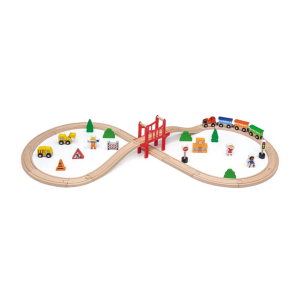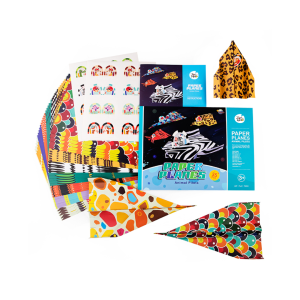How Are Wooden Trucks Made to Be Safe and Durable?
Cuerpo
Wooden trucks have long been a beloved toy for children due to their simplicity, durability, and timeless appeal. Unlike plastic alternatives, wooden trucks are often viewed as safer and more environmentally friendly. But how exactly are these toys designed and manufactured to ensure both safety and longevity? This blog explores the materials, craftsmanship, and design processes that contribute to the safety and durability of wooden trucks.
1. High-Quality, Non-Toxic Wood Materials
The foundation of any safe wooden truck begins with the type of wood used. Manufacturers typically opt for hardwoods like beech, maple, or oak, which are known for their strength and resistance to wear and tear. These woods can withstand rough play without splintering, cracking, or breaking.
To ensure safety, especially for younger children, the wood used is often untreated or finished with non-toxic, child-safe paints and sealants. Many manufacturers prioritize water-based paints and natural oils, avoiding harmful chemicals like lead or formaldehyde that can be found in some finishes.

2. Smooth, Rounded Edges
One of the primary safety concerns for any toy is the risk of injury from sharp edges or small parts. Wooden truck manufacturers address this by carefully sanding down all surfaces to ensure that the trucks are smooth to the touch. Rounded corners and edges are essential, as they minimize the risk of cuts or scratches, even during energetic play sessions.
Additionally, the design avoids small, detachable parts that could pose choking hazards, making these toys suitable for even younger children.
3. Simple and Sturdy Construction

The durability of wooden trucks comes from their simple yet robust construction. Unlike many plastic toys, wooden trucks do not contain small, fragile components or moving parts that are prone to breakage. Instead, they are often designed as solid pieces, which can endure years of play without falling apart.
The wheels of wooden trucks are securely attached to the base using either strong wooden pegs or screws. This solid construction ensures that the trucks can roll smoothly across different surfaces while remaining stable and resistant to damage.
4. Eco-Friendly Manufacturing Processes
In addition to safety and durability, the eco-friendliness of wooden trucks is another reason parents prefer them. Many wooden toy manufacturers source their materials from sustainably managed forests, ensuring that the production process has a minimal environmental impact.
The process of making wooden trucks typically involves fewer chemicals and less energy compared to plastic toys. By choosing eco-friendly materials and sustainable manufacturing practices, these companies further enhance the overall safety and appeal of their products.
5. Rigorous Safety Testing
Before wooden trucks reach store shelves, they are subjected to rigorous safety testing. Reputable manufacturers ensure that their toys comply with national and international safety standards, such as ASTM International or the European Toy Safety Directive. These standards govern factors like the strength of the toy, its resistance to impact, and its overall safety for children.
By undergoing these tests, wooden trucks are certified to be free of hazards like sharp edges, harmful chemicals, and detachable parts, ensuring peace of mind for parents.
Conclusion
Wooden trucks are a safe and durable option for children’s toys, thanks to the high-quality materials, thoughtful craftsmanship, and strict safety testing involved in their creation. Not only do they offer an eco-friendly and sturdy alternative to plastic toys, but they also provide children with hours of imaginative, safe play. Parents can feel confident knowing that wooden trucks are designed with their child’s well-being in mind.










Comentarios